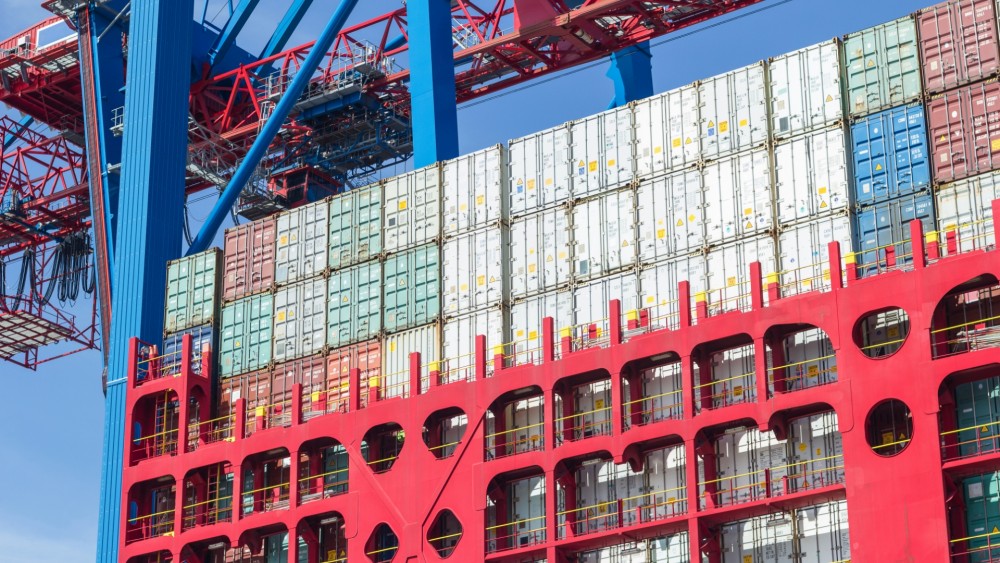Tuesday January 21, 2025
- ALL NEWS
- SMALL & MEDIUM ENTERPRISES (SME)
- INTERNATIONAL TRADE
-
REGIONS
-
NON-REGIONAL
Search

Australia, on November 22, approved the trade agreement inked with India in April, paving the way for the rollout of the pact on a mutually agreed date. This would increase trade between the two countries and is anticipated to increase to $45 - $50 billion in the next five years. The Agreement is anticipated to go into effect in January 2023.
Current bilateral trade
Currently, Australia is India's 17th largest trading partner, and India is Australia's 9th largest trading partner. In 2021, bilateral commerce between India and Australia in goods and services was worth US$ 27.5 billion. India's exports of goods to Australia increased by 135 per cent between 2019 and 2021. India exported goods of US$ 6.9 billion in 2021, most of which were completed goods.
In 2021, India imported commodities from Australia worth approximately $15.1 billion, primarily raw materials, minerals, and intermediate products. Coal makes up three-fourths of Australia's total imports to India.
The Agreement
India's first trade agreement with a developed country in more than ten years is the India-Australia Economic Cooperation and Trade Agreement (IndAus ECTA). Government sources claim that this pact will send a message to other industrialized nations like the UK, Canada, and EU, with whom India is now pursuing a free trade agreement. In five years, it is anticipated that the Indo-Australian Agreement will enhance bilateral commerce from its current level of US$ 27.5 billion to US$ 45 billion. The deal will expand the market share of Indian products and services in Australia. From US$ 10.5 billion in 2021 to US$ 20 billion by 2026–27 and US$ 35 billion by 2035, India's exports are predicted to rise.
As both India and Australia are large economies, there is scope for significant enhancement in bilateral trade if both have better access to the other's markets. India currently has a disadvantage compared to other countries with free trade agreements with Australia, such as China, Thailand, Vietnam, South Korea, Indonesia, Malaysia, and Japan, because exports from India are subject to a 4-5% import charge. India will be able to compete with these nations' goods to Australia thanks to the deal.
Additionally, the deal will allow goods and services not already exported to Australia access to the market there. Similarly, the Agreement will give Indian companies access to Australian suppliers, offering a good sourcing alternative. Due to the streamlined Australian regulatory procedures under the Agreement, the Indian pharmaceutical industry will specifically profit.
As various labour-intensive sectors will profit from the India-Australia Trade Agreement, it is anticipated that it will create about ten lakh employment over the following five to seven years. However, it is also anticipated to improve Indians' employment prospects in Australia. Apart from economic significance, the Agreement will also have strategic importance, as India has entered into the trilateral Supply Chain Resilience Initiative (SCRI) arrangement with Australia and Japan. It aims to increase the reliability of supply chains in the Indo-Pacific region, create dependable sources of supply, and draw in investment. This includes diversifying supply sources, raising sector competitiveness, identifying sectors for cooperation, looking into potential partners abroad, building capacity, and promoting domestic manufacturing.

Benefits to trade in goods
Indian exports to Australia primarily consist of consumer and manufactured goods. India will primarily profit from Australia's tariff liberalization and the fast-track approval of pharmaceutical products. Australia is granting zero-duty access to all tariff lines coming from India, and zero-duty will be applied right away to exports worth 96.4% of the value of India. This indicates that beginning the day the Agreement enters into force, Indian exporters will have instant duty-free access to those markets.
Currently, most of these goods—including the majority of textiles and apparel, a few agricultural and fish products, leather, footwear, furniture, and sporting goods, jewellery, machinery, electrical goods, railway wagons, some pharmaceutical products and medical devices, furniture, etc.—attract a 4-5% import duty in Australia. In the next five years, the charge will be eliminated on 113 tariff items that make up 3.6% of exports.
Additionally, since Australia supplies a substantial portion of India's raw materials and intermediates, many Indian businesses will benefit from cheaper raw materials, increasing their competitiveness, particularly in industries like steel, aluminium, fabric/garments, etc.
Besides, most of the products being imported by Australia are raw materials and intermediates. India is also providing Australia with tariff discounts in the form of tariff elimination or reduction, with or without a tariff-rate quota. India is removing tariffs on 40% of its tariff lines, which account for 85% of Australia's exports to India in value terms. According to the Agreement, 30.3% of its tariff lines would have zero or reduced tariffs over 3/5/7/10 years. Only a small number of agricultural items, including cotton, oranges, mandarins, almonds, pears, and others, have been permitted with a set quota.
India has retained several delicate products, which comprise 29.8% of tariff lines, in the exclusion category without making any concessions. Milk and other dairy goods, chickpeas, walnuts, pistachios, wheat, rice, bajra, apples, sunflower seed oil, sugar, oil cake, gold, silver, platinum, jewellery, iron ore, and the majority of medical gadgets are a few examples of these products. This is a significant benefit of this Agreement for India.
Overall gains
Due to Australia's extensive obligations, which will provide stability, predictability, and transparency for service exporters, the India-Australia Economic Cooperation and Trade Agreement will provide a favourable climate for expanding Indian service exports. As a result of Australia's substantial pledges on temporary entry and stay, exports related to professional, business, and student movement will increase.
It will make it possible for the two countries to have a more liberal, accommodating, open, and competitive services regime. Numerous industries may draw in new investments, and they would get access to top-notch financial, logistical, business, and professional services, increasing their competitiveness.
With access to top-notch consumer services in health, education, tourism, hospitality, and audio-visual services, greater consumer welfare on both sides will be possible. It will strengthen future collaboration in the new, mutually beneficial service areas.
Stay in the loop with Exports News.
Exports News is the best place to get the latest updates in the import/export world. Sign up for our newsletter today and stay informed.
No Comments
Add comment



We’re happy you are satisfied with Exports News. Please let us know if you need enything!
support@exportsnews.comWe’re sorry your experience was not satisfactory. Please let us know how we can improve your experience:
Please contact us with any questions or concerns: support@exportsnews.com


Your feedback has been received! If you have any other questions or concerns, please contact us at:


There aren't any comments yet. Be the first to comment!